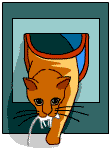Radiation Energy Detection Units
Created | Updated Jul 1, 2009

Conceived and patented1 in the United Kingdom by the prolific British inventor Arthur Paul Pedrick, the Radiation Energy Detection Unit (REDU), or Photon Push-Pull Radiation Detector, is an astounding and fascinating insight into a different level of thought that few common folk could be expected to experience.
The Way It Works
The principle of the REDU is based upon photon absorption and particle pressure, or basically, the effect that light has upon the surface of different objects. The REDU is a long tube with an opening at one end. Within the tube there are lenses and mirrors intended to control the channelling of incoming light. At the end of the tube is a plate, with either a black or a mirror face, on to which the channelled light is directed. Depending upon the face showing, the impact of the photons in the beam will either push or pull2 at the plate that is rigged with connectors. If the push or pull is significant enough, based upon a setting screw, the connectors will be touched allowing some form of operation to be activated3.
It should be highlighted that the Pedrick view of science is a very personal one and that, where his experiments appear to counter known fact, he is inclined to stick with the evidence. This is the case with 'photon impacts', as common science suggests that a fan, composed of reflective and black materials, exposed to sunlight is turned by the effect of heat on the air molecules that react with the greater heat of the dark material. However, Pedrick believes firmly that light itself impacts with the exposed surface of the fan, pushing the blades round.
Ginger's Predicament
The first proposed use for this detection system, as explained within the description of the patent, is to allow access for certain cats through a cat flap. In a nutshell, Arthur's cat, Ginger, faced competition for his food from a local, younger black cat. The patent proposed that the detector could be rigged into a system that would be activated by a cat's approach to the cat flap. A pressure pad would activate two strong light sources that would result in reflected light coming off the coat of the cat triggering the system. The REDU would be suspended in such a way as to receive this light and would react to the levels of light hitting the plate at the back of the tube.
The control factor on the cat flap was regulated by the fact that lighter colours reflect more light than dark, so the fur on Ginger produced more 'push' against the plate than the black fur of his competition. With fine tuning, via the setting screw, it was possible to adjust the REDU so that it would activate a mechanical opening system on the cat flap for Ginger, but leave the other cat sitting outside.
Nuclear Reprisal
The other proposed system for the detection system was to provide a means to target aggressive nuclear powers with a reprisal bomb. The patent proposes that the detector be included as part of several satellites forming part of an Automatic Response Nuclear Deterrent System, or ARNDS System, in orbit around Earth. The satellites would include a 1000 Megaton bomb, a sophisticated missile tracking system and a command computer.
The principle of the device is that should a nuclear power launch an attack against another country, the REDU would detect the explosion and activate the 'Reprisal Bomb'. The tracking system will provide the location of the original missile launch and direct the bomb there - thus creating a 'suicide situation', disintegrating the aggressor.
In Ginger's Own Words
While the considerable extremes of use proposed for the detection device are breath-taking enough, the patent itself provides something more for those who scan through it. At least half of the original patent description, specifically handling the nuclear deterrent aspect of its proposed use, is a narrative. While this is probably not completely unheard of, and has certainly be used as a vehicle for expressing ideas in the past, it appears somewhat peculiar here as the individuals involved in the discussion are the inventor and his cat.

